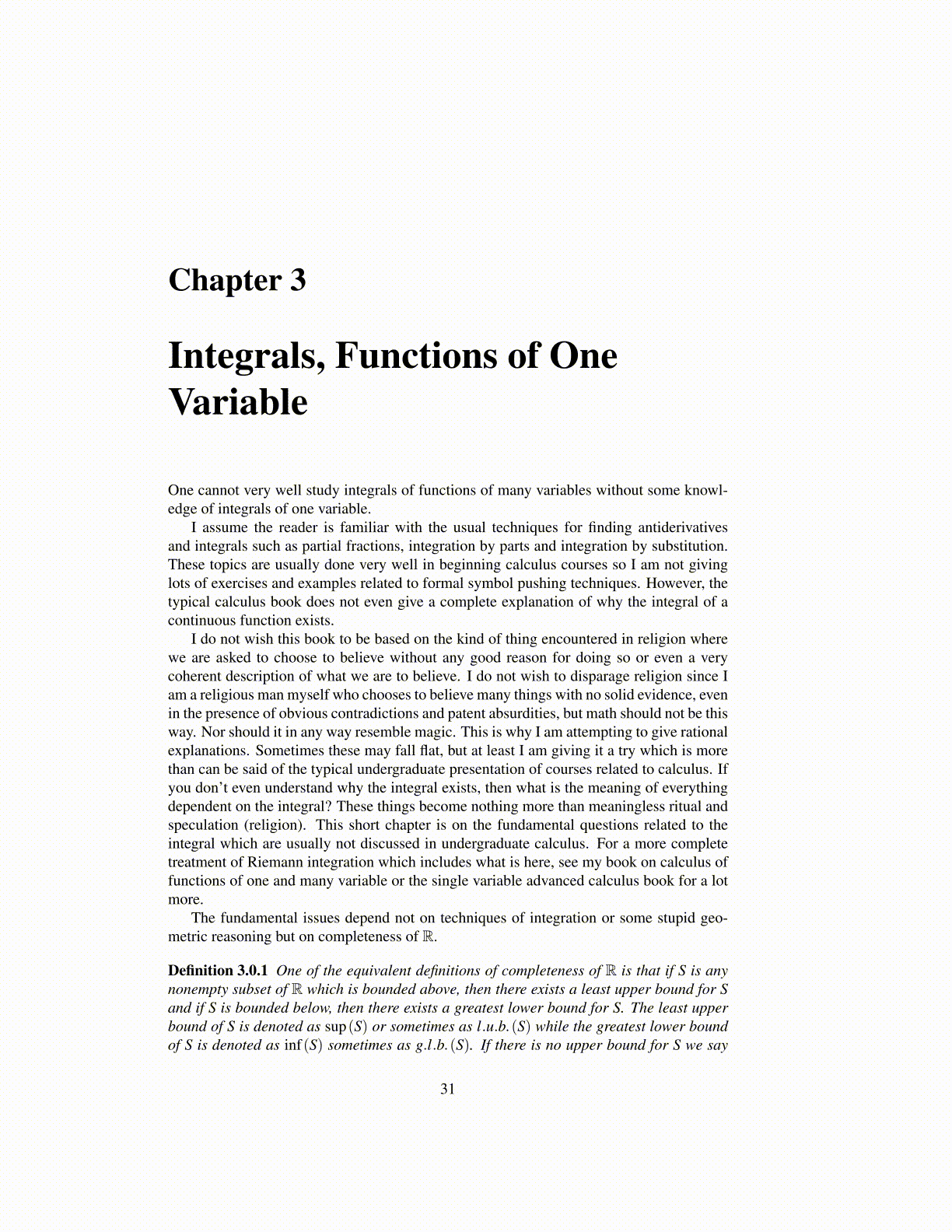
Chapter 3
Integrals, Functions of OneVariable
One cannot very well study integrals of functions of many variables without some knowl-edge of integrals of one variable.
I assume the reader is familiar with the usual techniques for finding antiderivativesand integrals such as partial fractions, integration by parts and integration by substitution.These topics are usually done very well in beginning calculus courses so I am not givinglots of exercises and examples related to formal symbol pushing techniques. However, thetypical calculus book does not even give a complete explanation of why the integral of acontinuous function exists.
I do not wish this book to be based on the kind of thing encountered in religion wherewe are asked to choose to believe without any good reason for doing so or even a verycoherent description of what we are to believe. I do not wish to disparage religion since Iam a religious man myself who chooses to believe many things with no solid evidence, evenin the presence of obvious contradictions and patent absurdities, but math should not be thisway. Nor should it in any way resemble magic. This is why I am attempting to give rationalexplanations. Sometimes these may fall flat, but at least I am giving it a try which is morethan can be said of the typical undergraduate presentation of courses related to calculus. Ifyou don’t even understand why the integral exists, then what is the meaning of everythingdependent on the integral? These things become nothing more than meaningless ritual andspeculation (religion). This short chapter is on the fundamental questions related to theintegral which are usually not discussed in undergraduate calculus. For a more completetreatment of Riemann integration which includes what is here, see my book on calculus offunctions of one and many variable or the single variable advanced calculus book for a lotmore.
The fundamental issues depend not on techniques of integration or some stupid geo-metric reasoning but on completeness of R.
Definition 3.0.1 One of the equivalent definitions of completeness of R is that if S is anynonempty subset of R which is bounded above, then there exists a least upper bound for Sand if S is bounded below, then there exists a greatest lower bound for S. The least upperbound of S is denoted as sup(S) or sometimes as l.u.b.(S) while the greatest lower boundof S is denoted as inf(S) sometimes as g.l.b.(S). If there is no upper bound for S we say
31